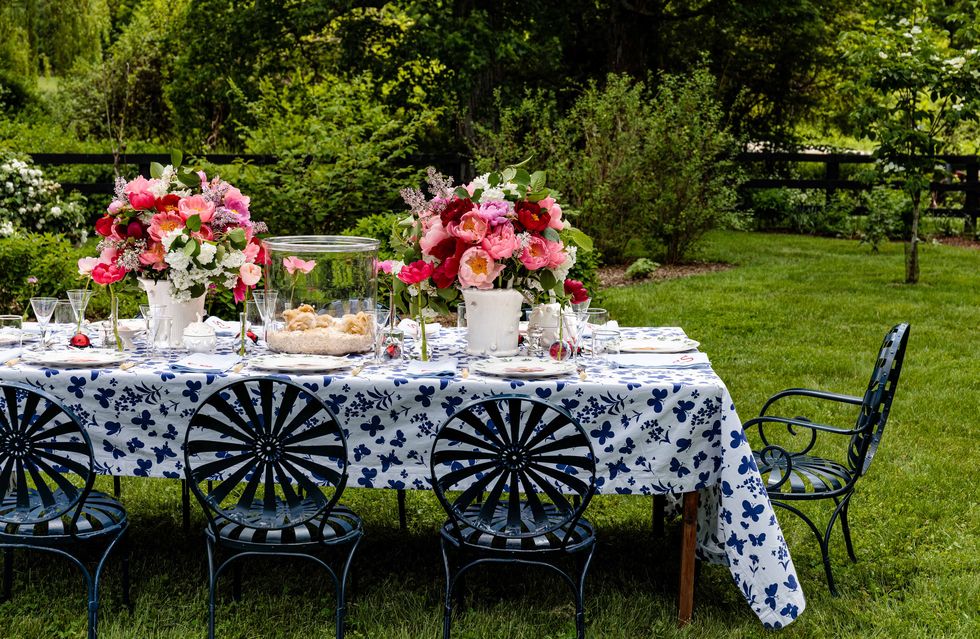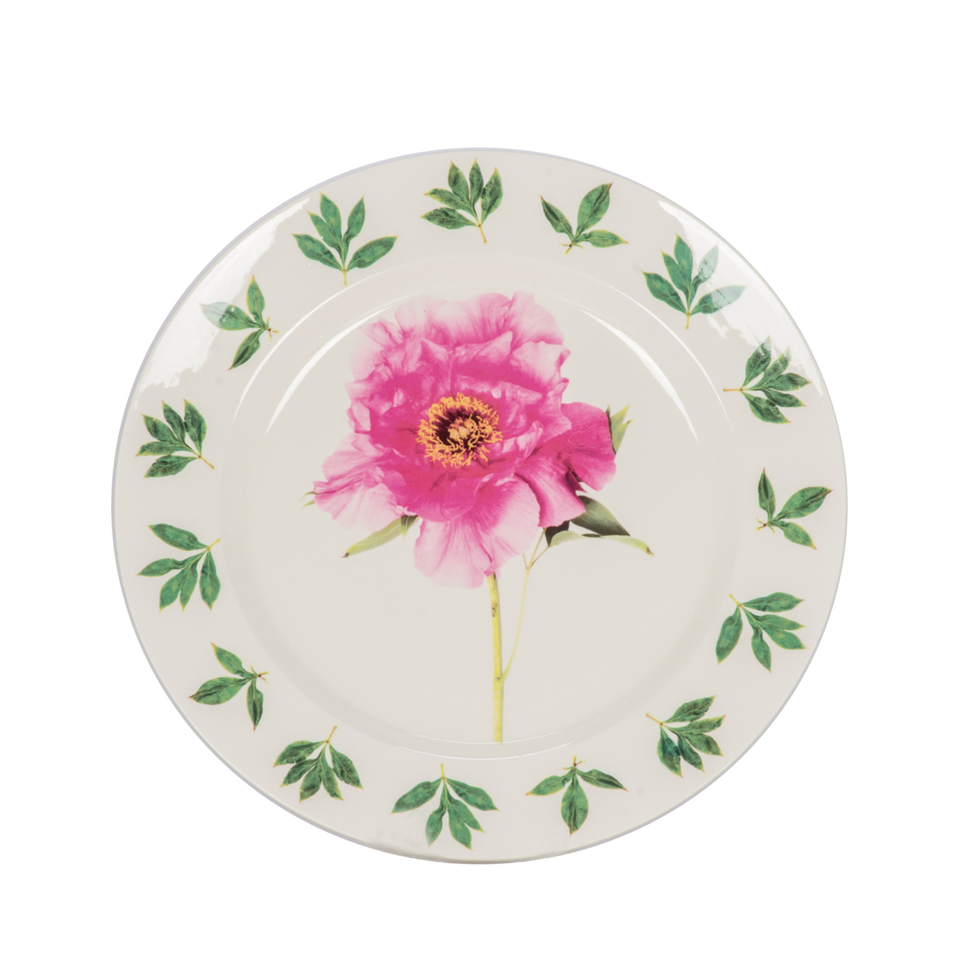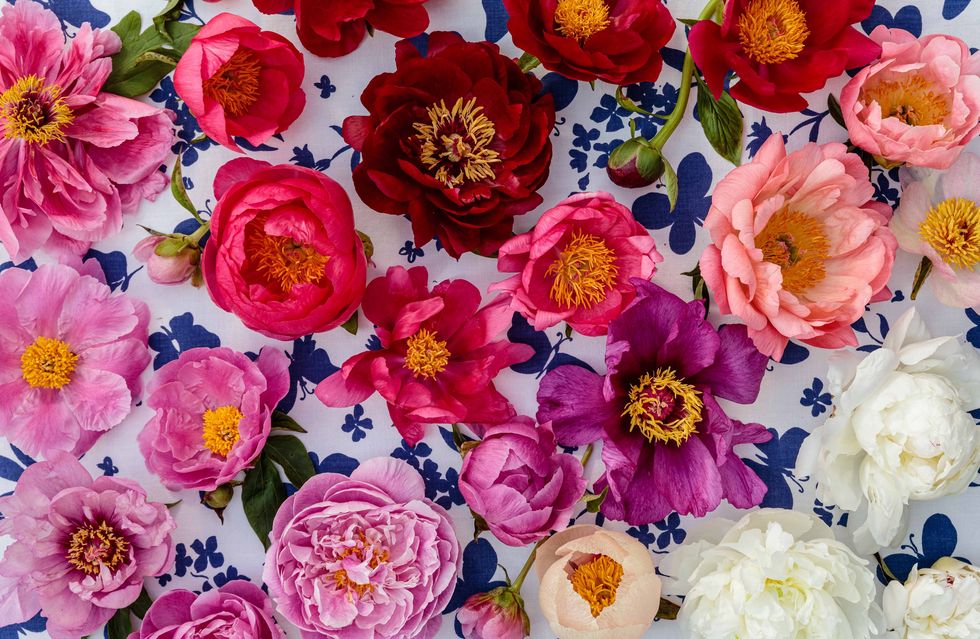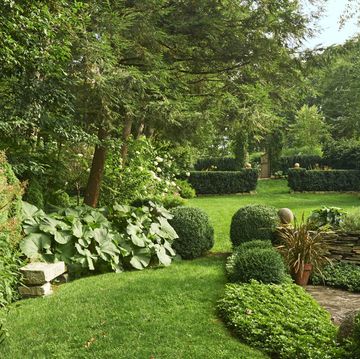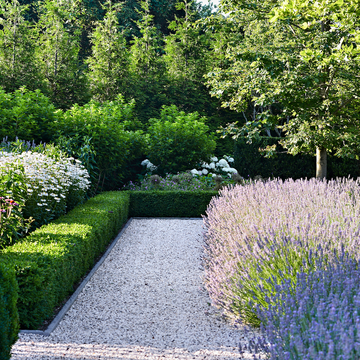With more than 2.8 million posts with the hashtag #peonies, it's safe to say the flower is a perennial favorite among floral enthusiasts. Known for its large blooms and symbolizing good fortune and a happy marriage, the peony is one of the most popular choices for cutting gardens and spring wedding bouquets alike. But sourcing them from flower markets can be difficult and expensive, thanks to their short blooming period (typically in late spring and for only a few weeks).
We turned to our friend, potter, and gardener extraordinaire Christopher Spitzmiller for tips on how to grow and care for peonies at home. Although his first foray into the design world was via his spectacular home decor collection of ceramic lamps, tableware, accessories, and mirrors, Spitzmiller has continued to dazzle and delight by chronicling the design and evolution of his country home, Clove Brook Farm, on Instagram, where he has nearly 65,000 followers.
On his Millbrook, New York, farm, Spitzmiller has not only renovated the main house but also added outbuildings for the animals he raises and cultivated acres upon acres of exquisite gardens. The artist-turned-gentleman farmer can now add author to his resume with the publishing of his first book, A Year at Clove Brook Farm (Rizzoli, 2021).
More From Veranda

The book provides an inspiring glimpse into how Spitzmiller lives on the farm, from gardening work and tending to his beloved birds to decorating his home and entertaining friends, over the course of a year, beginning in March. As he notes in the book's introduction, Spitzmiller intends to encourage his readers to "try something new around your own home," whether that activity involves dirtying hands in the garden or welcoming friends for cocktails or dinner. "I firmly believe that each of us has a garden within us, and it’s our own job to tend to it, nurture it, and let it flourish," he writes.
Enter Spitzmiller's "May" chapter, in which he highlights his peony garden with photography from it and a luncheon he hosted, with his homegrown peonies the stars of the show.
"My love for peonies is unwavering, so much so that I’ve immortalized them in a series of hand-thrown plates I designed that feature ones I’ve grown at Clove Brook Farm," Spitzmiller writes. The potter takes photos of his blooms, then prints the images on ceramic transfers that are applied to hand-thrown plates, which are fired at much lower temperatures than other ceramics.
Smitten by his beautiful bounty, we asked Spitzmiller to share his secrets. Here, Spitzmiller's master class on how to grow and care for peonies.
Plant to perfection at the beginning.
"Peonies are very easy to grow. Once you get them planted and rooted, you don't have to do a lot. But you have to be in the right climate. You need at least 32 days with weather below 32 degrees," says Spitzmiller.
As natives of China, peonies prefer cooler areas (USDA Hardiness Zones 3–8) and thrive when they experience cold winters. As such, they should be planted close to the soil surface so that they experience winter's chill, attain dormancy, and then set flower buds.
"In the fall, I plant bare root peonies just below—about two inches or so—the surface. Then, I just pull the dirt over them and leave them," says Spitzmiller, who names Cricket Hill Garden and Peony's Envy as favorite peony suppliers.
As Spitzmiller notes, peonies can thrive for decades in spots they they really like. But getting that initial planting right is essential for their survival, as they can be temperamental about being moved. Other considerations include: giving each plant room to mature (3 to 4 feet between plants); planting in a spot well-protected from wind and where peonies won't have to compete with other shrubs and trees for nutrients; and ensuring peonies can get at least six hours of full sun per day and 1 to 2 inches of water per week.
Take a more-is-more approach to peony varieties.
Each peony plant will produce several flowers, lasting about 7 to 10 days each. So the key to extending your peony bloom is by planting different varieties that will bloom at different times. With more than 30 varieties of the genus Paeonia, a peony bed can be as wildly colorful as your heart desires. Spitzmiller, for example, grows at least 12 different varieties of peonies at Clove Brook Farm.
"I plant colors I like: hot reds, pinks, white, lavender. I am not so fond of pale yellow, so I avoid those," says Spitzmiller. "I also like single peonies where you can see the stamen in them. They have a charm to them that’s otherwise missed."
Cut peonies when they are "soft marshmallows."
"I love to use peonies in arrangements, but the real trick is getting them to open at the same time," says Spitzmiller, who shared two secrets to his success.
First, "I pick them when they are soft marshmallows," well before they are ready to open but after they have softened from their "nard marble" stage, Spitzmiller says. Then, because peonies can last for a long time, the potter stores them in cool water in the refrigerator until he is ready to use them in an arrangement.
"Get them out a night or two before you want them to open," he says. "This way, you're more likely for them to flower at once, rather than in batches."
Snip seed pods for a better bloom next year.
Spitzmiller acknowledges that he cuts so many of his peonies for arrangements that he doesn't need to stake his peonies for support. He does, however, perform a little maintenance on his peonies when they are finished flowering for the year.
"When my peonies are finished flowering, I snip the seed pod out to make the next year's flower more prolific," Spitzmiller says. "I deadhead any spent flowers at the end of blooming season. You want to avoid seed pods forming. This redirects the plants' energy to the roots and into creating more flowers for next year."
Spitzmiller adds that herbaceous peonies do not need any pruning while in season. "You want to leave as much green on them as possible," he says. "Only prune at the end of the season, leaving 1 to 2 inches of stem so you know where they are."
Fertilize peonies only once a year.
Spitzmiller feeds his peony plants with fertilizer only once each year. "In either fall or early spring, I fertilize my peonies with granular Azomite fertilizer, just a small 1/4 cup sprinkled in a circle around the drip line of the plant," says Spitzmiller. "Be careful not to get any on the sprouts in the spring, as it will burn them."



